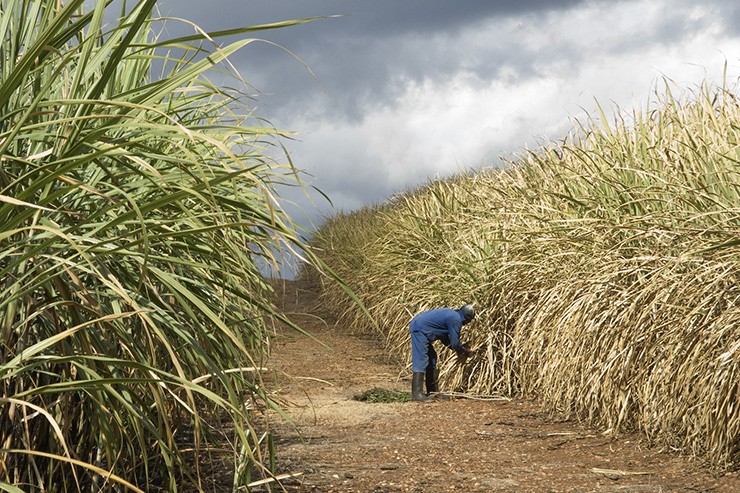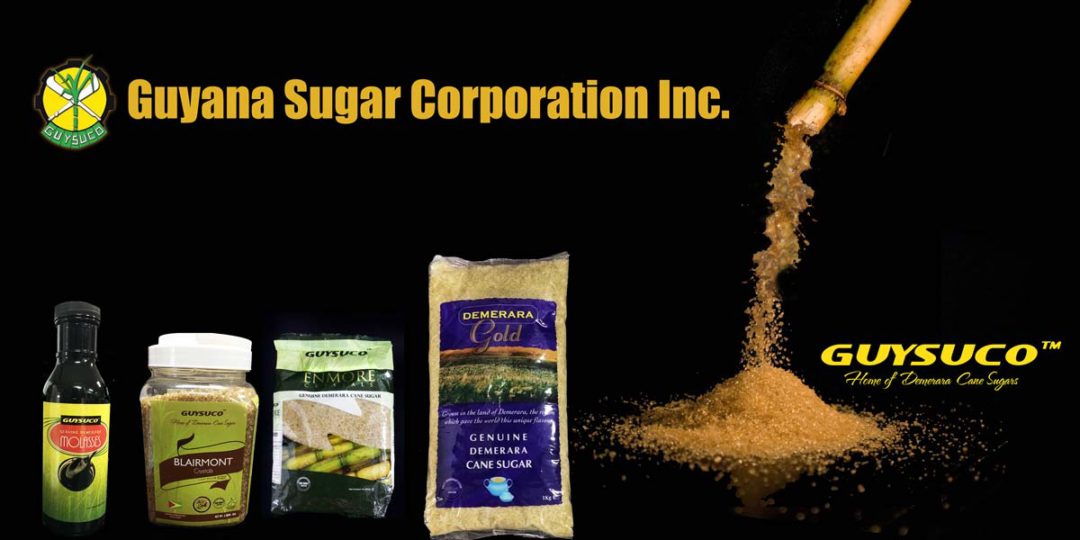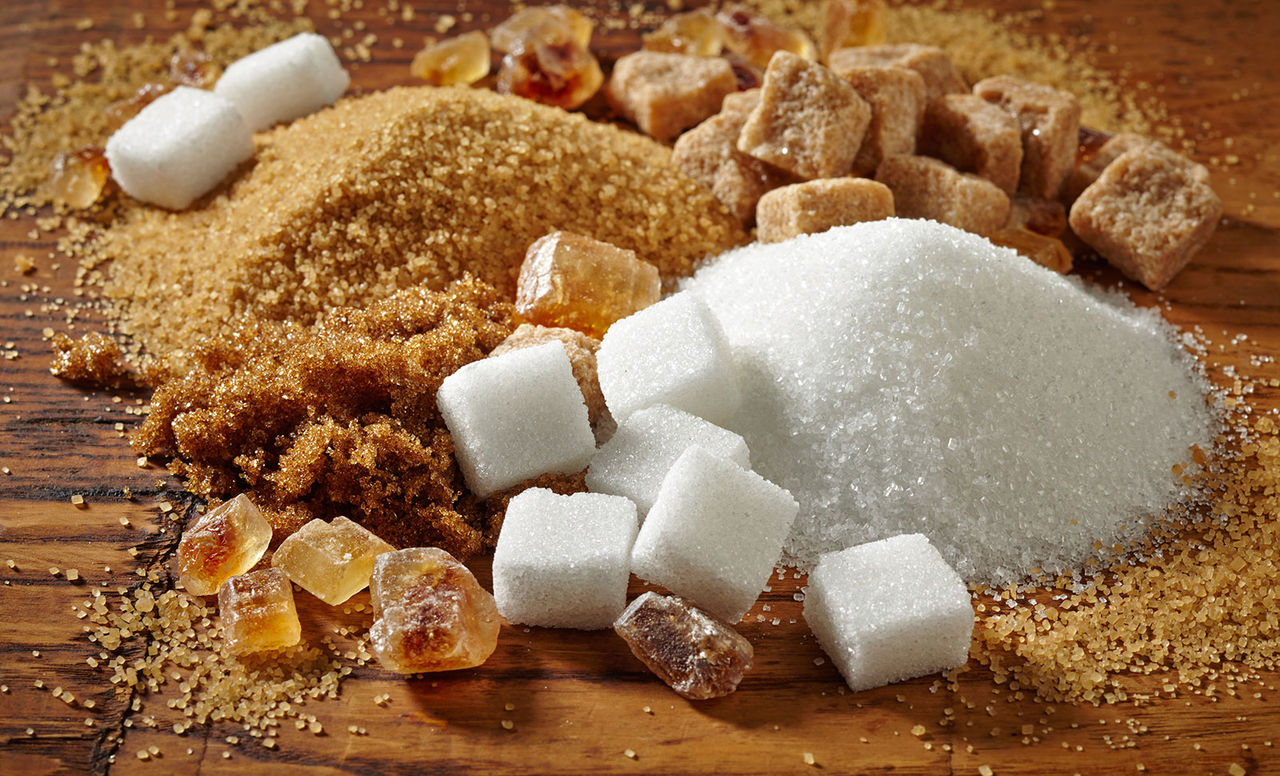 ’Sweet like sugar.’’ Sugar is used in Guyana and by many around the world; people love it and children crave it. When it touches the tongue, even though it melts, the sensation it gives off is sweet, energetic and delicious. Stories have told that at one time sugar value equaled that of precious gems; it is also said that a spoonful of sugar helps the medicine to go down. Sugar is one of the main crops produced in Guyana and the sugarcane cultivation and processing plays a major role in producing this golden sugar.
’Sweet like sugar.’’ Sugar is used in Guyana and by many around the world; people love it and children crave it. When it touches the tongue, even though it melts, the sensation it gives off is sweet, energetic and delicious. Stories have told that at one time sugar value equaled that of precious gems; it is also said that a spoonful of sugar helps the medicine to go down. Sugar is one of the main crops produced in Guyana and the sugarcane cultivation and processing plays a major role in producing this golden sugar.
The Sugar Industry
In 1658, the sugar industry was founded under the rule of the Dutch West Indian Company. They established four plantations on the Pomeroon River in Essequibo. Later, the provinces of Demerara and Berbice were settled.
By 1759, there were 120 plantations along the Demerara River and 200 on the East Bank of Essequibo. The main crop produced was sugar but there were smaller areas for coffee and ground crops. At the close of the 18th century, there were some 380 separate estates from the Corentyne to the Pomeroon.
In 1841, Berbice, Demerara and Essequibo were finally ceded to the British, and, under their rule, the sugar industry progressed so that ten years later, the colonies produced some 12,214 tons of sugar. By the beginning of the 19th century, there were nearly 400 plantations in Guyana.
In 1973, the sugar industry was mainly owned by two London-based companies – Jessel Securities which owned two factories and accounted for about 15% of the total sugar production. 5% was produced by an independent Guyanese factory owned by the Vieiras and 80% by Booker McConnell.
In 1975, the Demerara Company estates were nationalized becoming DEMSUCO. The Guyana Government then acquired the Booker Sugar Estates in Guyana in May, 1976. Along with this, two nationalized Demerara Sugar Company estates were added to form the Guyana Sugar Corporation (GuySuCo).
Did You Know?
GuySuCo was comprised of six sugar estates:
- Skeldon
- East Berbice (merging of Albion/Port Mourant & Rose Hall)
- Blairmont
- East Demerara (amalgamation Enmore, LBI/Diamond Estates)
- Wales
- Uitvlugt/ Leonora.
GUYSUCO – GUYANA SUGAR CORPORATION

GuySuCo was formed in 1976; this occurred when the government of Guyana nationalized and merged the sugar estates. GuySuCo is a sugar company in Guyana that is owned by the government; it is the country’s largest cultivator and producer of sugar. They are also notable for selling Demerara Sugar, and also honey and sweeteners.
Sugarcane Cultivation in Guyana
 Guyana was at one point the largest sugar producer in the Caribbean Community. Sugarcane is grown in several areas near the coast. Temperatures are high all year round and the area receives about 2000 mm of rain each year. This is good as sugarcane requires high temperatures and at least 1500 mm of rain annually to thrive. Also, there are two rainy seasons and two drier periods. Therefore, there are two sugarcane harvests per year. The sugarcane is allowed to grow during the wetter periods and harvested in the drier periods.
Guyana was at one point the largest sugar producer in the Caribbean Community. Sugarcane is grown in several areas near the coast. Temperatures are high all year round and the area receives about 2000 mm of rain each year. This is good as sugarcane requires high temperatures and at least 1500 mm of rain annually to thrive. Also, there are two rainy seasons and two drier periods. Therefore, there are two sugarcane harvests per year. The sugarcane is allowed to grow during the wetter periods and harvested in the drier periods.
The fields may be flooded for months before sugarcane is planted; this deposits nutrients and minerals in the soil and it kills the weeds at the same time. The flooding lessens the need for weedicides, fertilizers and pesticides; as it also helps to control pests.
Sugarcane is usually planted by hand; they are planted in beds to aid drainage. Almost one eighth of the area of the average sugarcane field is taken up by canals and this is used for irrigation. The canals are also used for transporting the canes to the factories. They are transported in small flat-bottomed boats, known as punts, from the fields to the factories.
Normally, the sugarcane is harvested manually; sometimes the roots are left in the ground to produce new plants. This can be done up to four times and it is known as ratooning. The fields are then ploughed and replanted.
Products of the Sugarcane Industry:
- Cane tops
- Bagasse
- Filter mud
- Molasses
- Ethanol
- Sugar
Value of sugar and jobs
Export of Guyana’s Sugar
The brown sugar produced in the Demerara River basin is exported to the European Union, the United States of America, Trinidad, Suriname, St. Lucia, Grenada, Antigua, Dominica, Barbados, St. Vincent and Jamaica.
Tip: The scientific name for sugar is sucrose.
Sugarcane Processed into Sugar in Guyana
Sugarcane is a grass, which typically consists of 12% sucrose, 15% fibre, 70% water and 3% salts and organic compounds. Sucrose is soluble in water. The sugar juice is extracted from the fibre and the sugar is then crystalized from the juice. Sugar is enjoyed by many in Guyana; they used it to sweeten their tea, to make drinks, to make sweets like mithai and sugar cake, etc. The sugarcane industry, cultivation and processing, altogether plays a sweet role in producing sugar!
Recent Developments
Sugar was one of Guyana’s main export for a long time, but from 2015 this industry has been contracting. We are now seeing a number of sugar estates becoming decommissioned as Government continue to see challenges in the industry. Is it time for us to fond something sweeter than sugar (for our economy)?
Article References:
- http://guysuco.gy/index.php/en/contact-us
- http://guysuco.gy/index.php/en/who-we-are/company-overview/item/2-history
- https://en.wikipedia.org/wiki/Guyana_Sugar_Corporation
- https://www.geoforcxc.com/economic-activities/sugarcane-cultivation-in-guyana/
- http://guyanachronicle.com/2018/02/04/bioenergy-from-sugar-production







